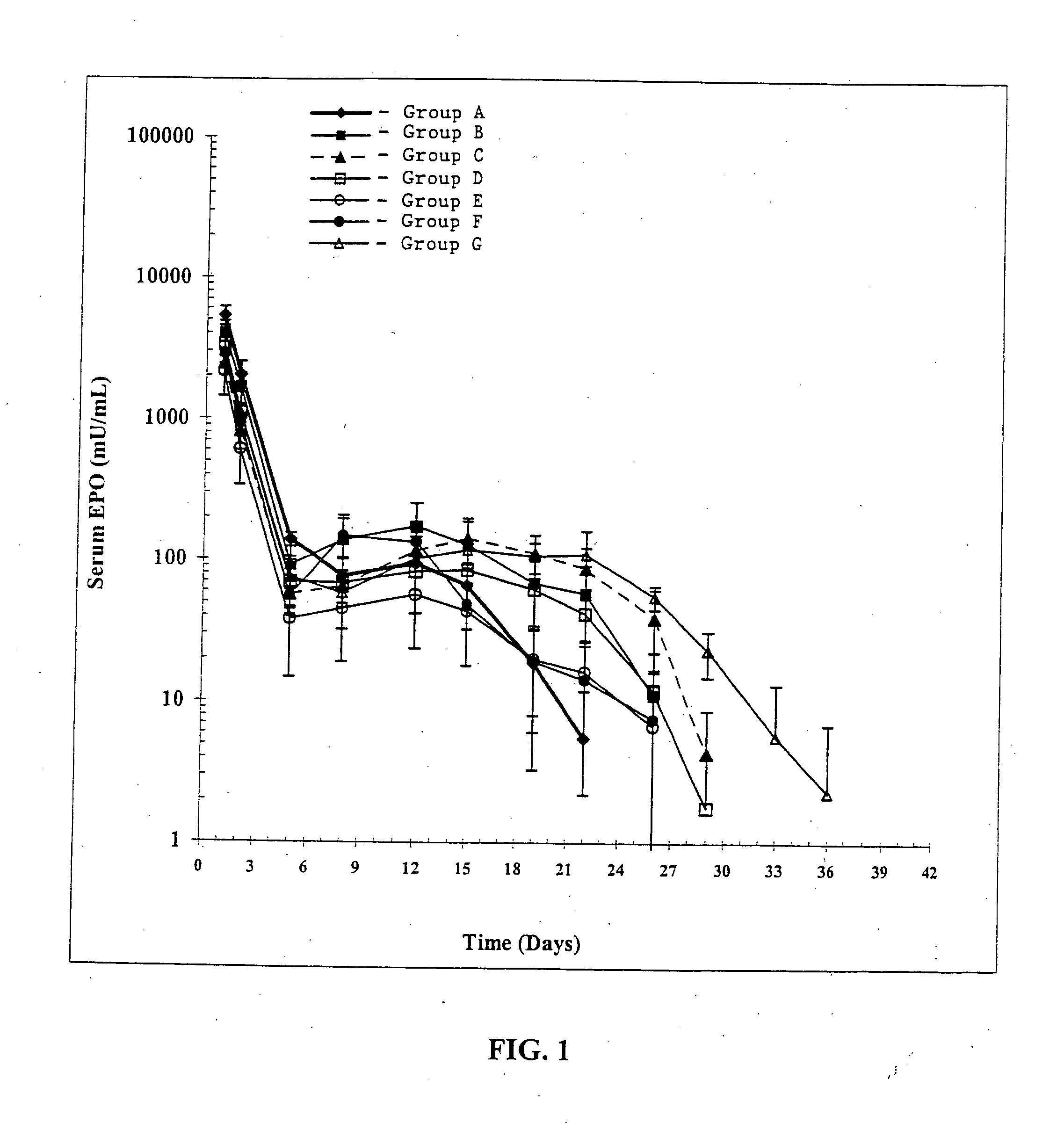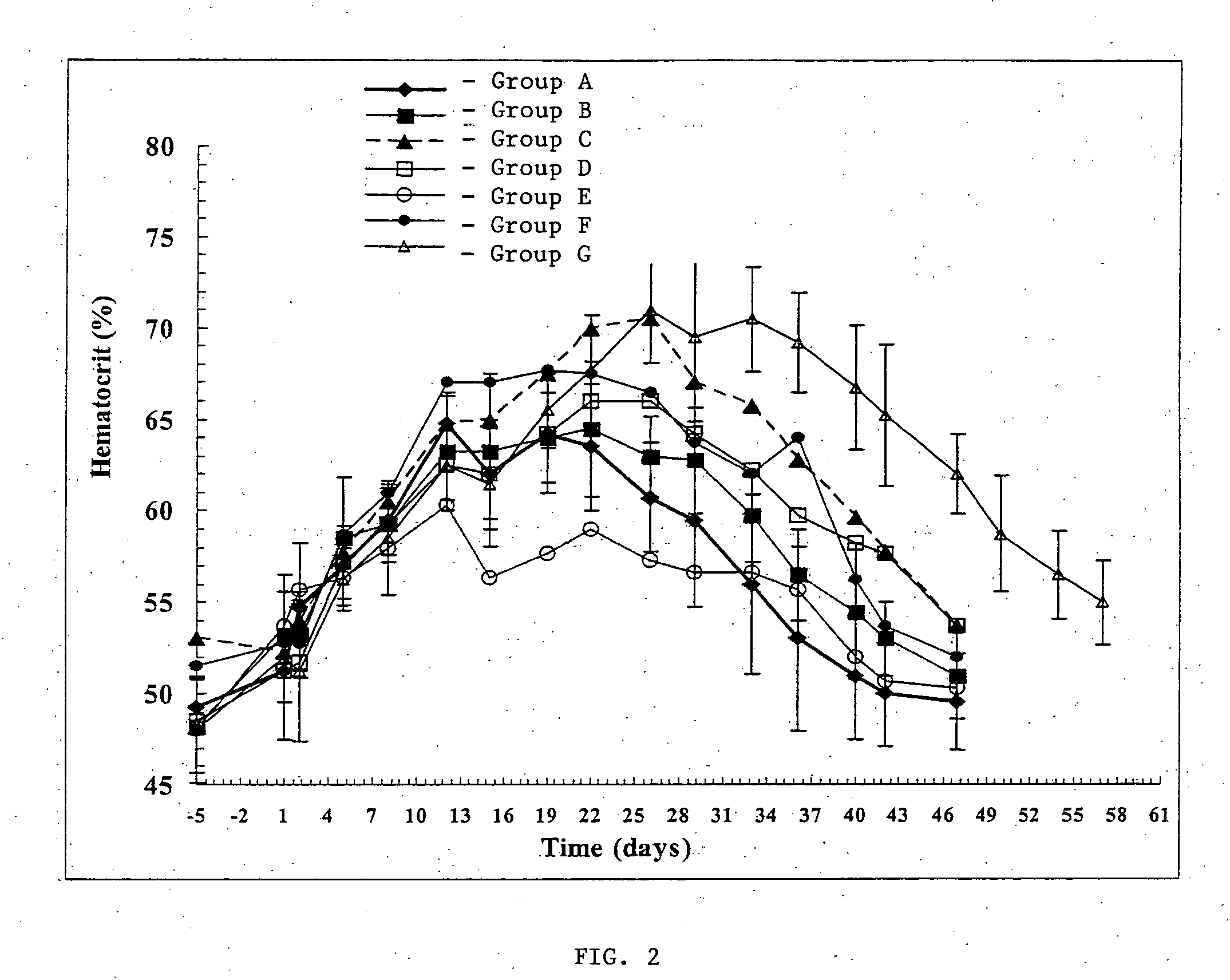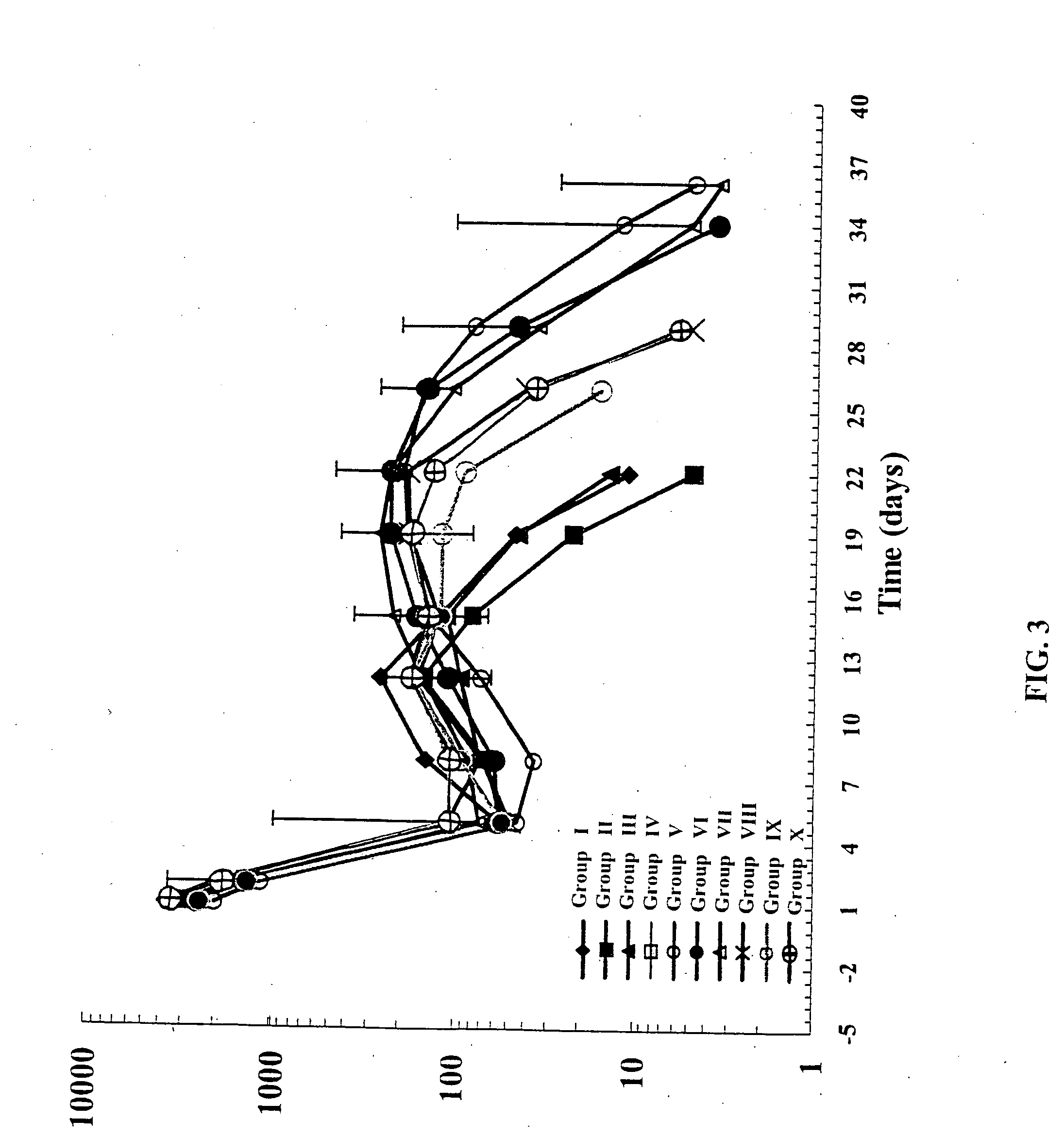Method of modifying the release profile of sustained release compositions
a technology of composition and release profile, which is applied in the direction of phosphorous compound active ingredients, biocide, animal husbandry, etc., can solve the problems of increasing immunogenicity, reducing the effect of phosphorous compound release rate, and reducing the release rate of phosphorous compound
- Summary
- Abstract
- Description
- Claims
- Application Information
AI Technical Summary
Benefits of technology
Problems solved by technology
Method used
Image
Examples
example 1
Pharmacological Effects of Bisphosphonate-Containing Microparticles on EPO Release from EPO-Containing Micro Following Co-Administration
[0098] The Phamacokinetic (PK) / Pharmacodynamic (PD) response to EPO released from EPO-containing microparticles when co-administered with bisphosphonate-containing microparticles in vivo to male Sprague-Dawley rats was determined.
Microparticle Administration
[0099] Animals were anesthetized with 5% halothane. Each animal was shaved and the back swabbed with alcohol. Microparticles were resuspended using 0.75 mL vehicle (3% carboxymethylcellulose, 0.1% Tween 20, 0.9% NaCl, pH ˜6). The microparticles were injected into an interscapular site using a 21 guage thinwall needle attached to a 1 mL syringe. Animals were dosed to receive a total of 10,000 U EPO in combination with a total of 2.5 mg of the indicated bisphosphonate. The amount of bisphosphonate-containing microparticles needed was determined based on the theoretical load of bisphosphonate i...
example 2
Co-Administration of EPO-Containing Microparticles with Alendronate-Containing Microparticles at Varying Doses
[0111] This example compares the PK / PD response to EPO released from EPO-containing microparticles when co-administered with various doses of alendronate-containing microparticles.
Materials and Methods
[0112] EPO-containing microparticles, alendronate-containing microparticles and placebo microparticles were prepared as described in Example 1. Alendronate-containing microparticles were prepared at a loading of 1.0% and 2.5% (theoretical). Microparticle administration, sample collection and sample analysis were as described in Example 1 and are summarized in Table 2. Sample collection timepoints were pre-bleed, 1, 2, 5, 8, 12, 15, 19, 22, 26, 29, 33, 36, 40.
TABLE 2NumberofAlendronateAnimalsDose (mg)Placeboper(theoretical load × mgDoseGroupGroupEpo Dose (U)μparticles = dose)(mg)I410,000 U—100 mgII410,000 U— 50 mgIII410,000 U— 25 mgIV4—2.5 mg—(2.5% × 100 mgμparticles)V410...
example 3
Effects of Pamidronate Co-Encapsulated with EPO
Materials and Methods:
[0119] EPO-containing microparticles were prepared as described in Example 1 using a 40 kD Polymer poly(lactide-co-glycolide) polymer having a lactide glycolide ratio of 50:50 (Cat. No. 5050DL4A, Alkermes, Inc., Cinncinnati, Ohio). In addition, EPO-containing microparticles (1.9% theoretical load) having pamidronate co-encapsulated at nominal loads of 1% and 10% (theoretical) were also prepared as described in Example 1 for EPO alone.
[0120] Microparticle administration, sample collection and analysis were as described in Example 1 and are summarized in Table 4. Sample collection timepoints were pre-bleed, 1, 2, 6, 9, 13, 16, 20, 23, 27, 30, 34, 37, 41, 44, 48 days.
TABLE 4# AnimalsperAmount ofPamidronateGroupGroupEPO(% Theoretical Load)X5*20,000 U—Y520,000 U 1%Z520,000 U10%
*Routine bleeds are taken from 5 of the animals in each group. Two animals from each group will be used for a histological assessment of t...
PUM
| Property | Measurement | Unit |
|---|---|---|
| Fraction | aaaaa | aaaaa |
| Fraction | aaaaa | aaaaa |
| Fraction | aaaaa | aaaaa |
Abstract
Description
Claims
Application Information
 Login to View More
Login to View More - R&D
- Intellectual Property
- Life Sciences
- Materials
- Tech Scout
- Unparalleled Data Quality
- Higher Quality Content
- 60% Fewer Hallucinations
Browse by: Latest US Patents, China's latest patents, Technical Efficacy Thesaurus, Application Domain, Technology Topic, Popular Technical Reports.
© 2025 PatSnap. All rights reserved.Legal|Privacy policy|Modern Slavery Act Transparency Statement|Sitemap|About US| Contact US: help@patsnap.com



